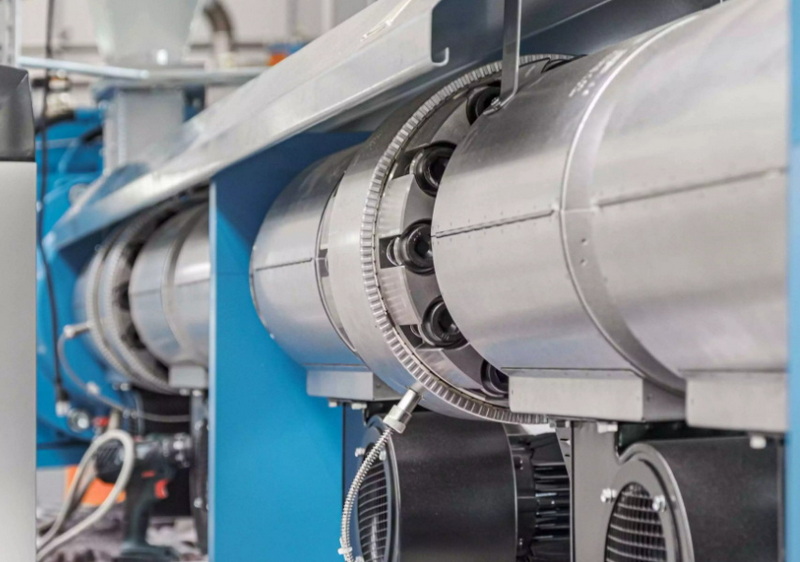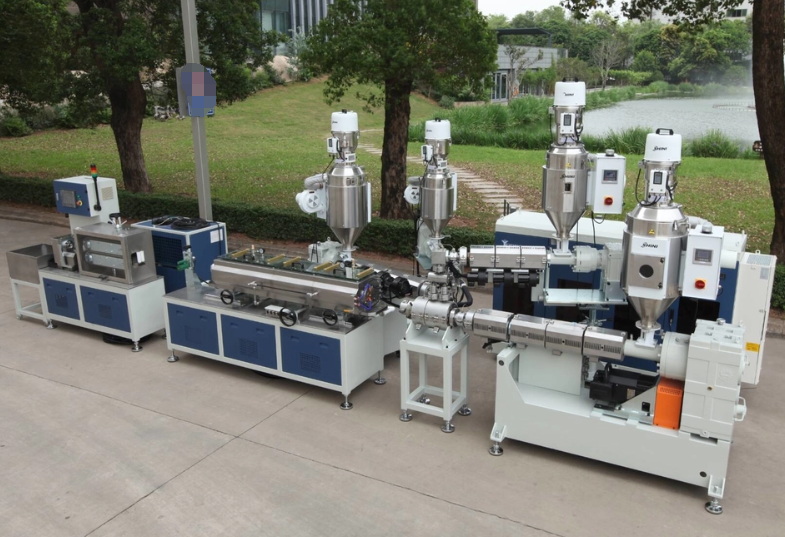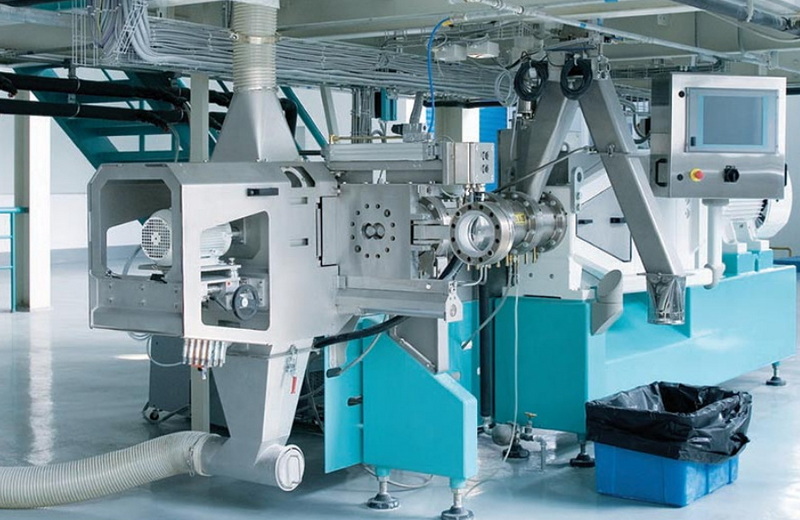Content Menu
● Introduction to Medical Tube Plastic Extrusion Machinery
>> Key Components of Medical Tube Plastic Extrusion Machinery
● Enhancing Production Efficiency with Medical Tube Plastic Extrusion Machinery
>> 1. Precision and Consistency
>> 2. Efficiency and Scalability
>> 3. Regulatory Compliance
>> 4. Energy Efficiency
>> 5. Customization and Flexibility
● Advanced Technologies in Medical Tube Extrusion
>> 1. Multi-Layer Extrusion
>> 2. Nanotechnology Integration
>> 3. Smart Materials
>> 4. Automation and AI
● Challenges and Future Developments
● Case Studies: Successful Implementations
● Conclusion
● Frequently Asked Questions
>> 1. What are the primary materials used in medical tube extrusion?
>> 2. How does precision rotary gear pump enhance extrusion efficiency?
>> 3. What role do cooling tanks play in medical tube extrusion?
>> 4. How does medical tube plastic extrusion machinery ensure regulatory compliance?
>> 5. What are the benefits of using energy-efficient extruders in medical tube production?
Medical tube plastic extrusion machinery plays a crucial role in enhancing production efficiency in the medical industry. This machinery is designed to produce high-quality medical tubes with precise dimensions and specifications, which are essential for various medical applications such as catheters, IV lines, and surgical tools. In this article, we will explore how medical tube plastic extrusion machinery enhances production efficiency and discuss its key components, processes, and benefits.

Introduction to Medical Tube Plastic Extrusion Machinery
Medical tube plastic extrusion machinery is a specialized manufacturing system used to create precise, functional tubing for medical devices. The process involves heating raw materials, typically thermoplastics like PVC, polyurethane, or silicone, to a molten state and then forcing them through a die to form the desired shape. This machinery is critical in ensuring the tubes meet stringent quality standards for patient safety and device reliability.
Key Components of Medical Tube Plastic Extrusion Machinery
1. Extruders: These are the heart of the extrusion line, responsible for melting and shaping the raw materials into molten plastic. Advanced extruders feature dies that determine the tubing's shape and dimensions, while calibration systems ensure consistent sizing and roundness.
2. Dies: Specialized dies are used to create complex geometries with tight tolerances, ensuring each component meets exact specifications required for medical applications.
3. Calibration Systems: These systems enhance accuracy by maintaining consistent dimensions throughout the extrusion process. Automated calibration equipment further reduces variability and improves production efficiency.
4. Cooling Tanks: Efficient cooling tanks stabilize the tubing post-extrusion, ensuring it retains its intended shape and dimensions. Advanced cooling systems use precise temperature regulation to prevent deformation and ensure uniform cooling across the tubing's surface.
5. Cutting Units: These guarantee precise tube lengths by utilizing high-speed, automated mechanisms. These systems often incorporate programmable settings to meet various length requirements, ensuring versatility and reducing waste.
Enhancing Production Efficiency with Medical Tube Plastic Extrusion Machinery
1. Precision and Consistency
Medical tube plastic extrusion machinery allows for the production of complex geometries with tight tolerances, ensuring each component meets exact specifications required for medical applications. This precision is crucial for ensuring the safety and effectiveness of medical devices.
2. Efficiency and Scalability
The process is highly efficient, offering scalability for high-volume production while minimizing material waste. This is particularly important in the medical industry, where large quantities of tubing are often required.
3. Regulatory Compliance
The machinery is closely monitored and controlled to ensure compliance with rigorous industry standards, such as ISO 13485 and FDA regulations, guaranteeing the safety and reliability of the final products.
4. Energy Efficiency
Modern extruders are designed to be energy-efficient, with options like high-efficiency motors and variable-speed drives that can significantly reduce energy consumption.
5. Customization and Flexibility
Medical tube plastic extrusion machinery can be customized to meet specific customer needs, allowing for the production of a wide range of medical tubes from various materials.

Advanced Technologies in Medical Tube Extrusion
1. Multi-Layer Extrusion
This technology allows for the creation of tubes with multiple layers, each with different properties, such as varying stiffness or biocompatibility. This enhances the functionality of medical devices by providing additional features like drug delivery or improved durability.
2. Nanotechnology Integration
Incorporating nanomaterials into the extrusion process can enhance the mechanical properties of the tubes, such as strength and flexibility, while also improving biocompatibility.
3. Smart Materials
The use of smart materials that can respond to environmental changes (e.g., temperature or pH) offers potential for creating medical devices with adaptive functionalities.
4. Automation and AI
Advanced automation and AI technologies are being integrated into extrusion lines to optimize production processes, predict maintenance needs, and ensure consistent quality.
Challenges and Future Developments
Despite the advancements in medical tube plastic extrusion machinery, there are ongoing challenges related to material selection, regulatory compliance, and environmental sustainability. Future developments are likely to focus on sustainable materials, enhanced automation, and further customization capabilities to meet evolving medical needs.
Case Studies: Successful Implementations
Several companies have successfully implemented medical tube plastic extrusion machinery to enhance their production efficiency. For instance, a leading medical device manufacturer was able to increase production capacity by 30% while reducing material waste by 20% through the use of advanced extrusion technology.
Conclusion
Medical tube plastic extrusion machinery is vital for enhancing production efficiency in the medical industry. By providing precision, consistency, efficiency, regulatory compliance, energy efficiency, and customization, these machines ensure that medical tubes meet the highest standards for safety and reliability. As technology continues to evolve, we can expect even more advanced machinery that further improves production efficiency and product quality.

Frequently Asked Questions
1. What are the primary materials used in medical tube extrusion?
The primary materials used in medical tube extrusion include PVC, polyurethane, silicone, and thermoplastic elastomers. These materials are chosen for their biocompatibility, flexibility, and durability.
2. How does precision rotary gear pump enhance extrusion efficiency?
A precision rotary gear pump enhances extrusion efficiency by providing steady pressure and accurate metering of the polymer to the die head, minimizing surging and ensuring consistent product quality.
3. What role do cooling tanks play in medical tube extrusion?
Cooling tanks stabilize the tubing post-extrusion, ensuring it retains its intended shape and dimensions. Advanced cooling systems use precise temperature regulation to prevent deformation and ensure uniform cooling.
4. How does medical tube plastic extrusion machinery ensure regulatory compliance?
Medical tube plastic extrusion machinery ensures regulatory compliance by being closely monitored and controlled to meet rigorous industry standards, such as ISO 13485 and FDA regulations.
5. What are the benefits of using energy-efficient extruders in medical tube production?
Using energy-efficient extruders in medical tube production can significantly reduce energy consumption, with options like high-efficiency motors and variable-speed drives offering rapid returns on investment.






















